Peru 1 – !Bienvenidos a Peru!
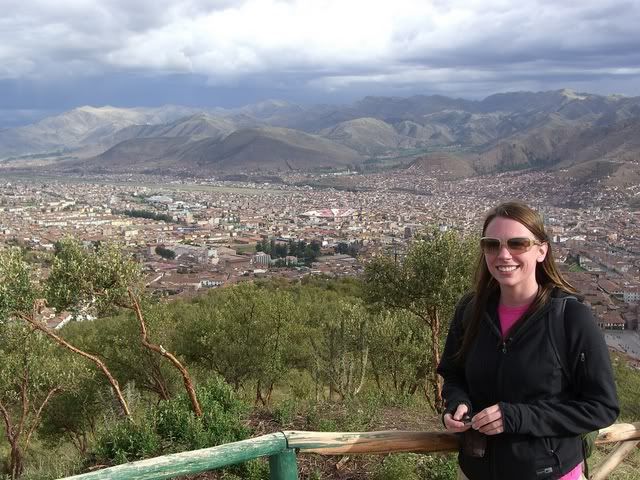
View of city of Cusco (with special guest star Lindsay) from Saqsaywaman
Hola and welcome to the Peruvian version of the Extravanganza blog. After a ridiculous amount of travel (9 hours bus across the Ecuador/Peru border, flight from northern Peru to Lima, 3 hour wait for the arrival of Lindsay’s plane, 6 hours in the Lima airport waiting for our early morning flights to Cusco, one accidental flight cancellation (Lindsay) and a two hour delay on my flight to Cusco) we arrived safe and sound and exhausted in the beautiful Incan city of Cusco. So, the Incas. What is the deal with the Incas? Perhaps we could use a little refresher on the significance of the ancient Incas which will give some good background for what’s coming up in here at the Extravaganza.

Plaza de Armas – Cusco, Peru
The Inca civilization began as a tribe in the Cusco area, where the legendary first Sapa Inca Manco Capac founded the Kingdom of Cusco around 1200. Under the leadership of the descendants of Manco Capac, the state grew as it absorbed other Andean communities at that time. It was in 1438, when the Incas began a far reaching expansion under the command of Pachacutec, whose name literally meant earth-shaker. He formed the Inca empire (Tawantinsuyu), that would become the largest empire in pre-Columbian America.
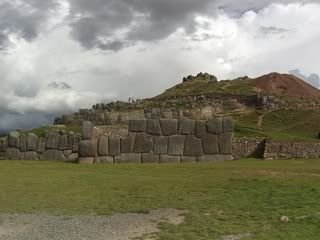
Ruins of Saqsaywaman
In 1532, and after the civil war in the empire between the brothers Huascar and Atahualpa, the Spanish conquerors led by Francisco Pizarro conquered the Inca territory. In the following years the conquistadors managed to consolidate their power over the whole Andean region, repressing successive Inca rebellions until the establishment of the Viceroyalty of Perú in 1542 and the fall of the resistance of the last Incas of Vilcabamba in 1572. The Inca civilization ends at that time, but some cultural traditions remain in some ethnic groups as Quechuas and Aymara people.
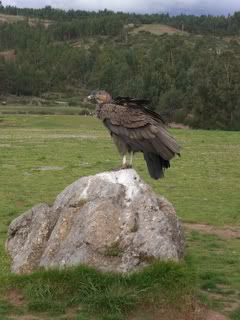
A condor
So that’s the brief version of the history (courtesy of Wikipedia) but what is so special about the Incas anyway? Well, having spent the past five days or so surrounded by ruins and ancestors of these people I can tell you that they were a clever bunch. Take, for example, this masonry:

The stones for these walls were dragged by rope and tree-trunk rollers over 75 kilometers (sorry Americans, I’ve been temporarily converted to the metric system) to their location here just above Cusco at the site of Saqsaywaman. After being chiseled into perfection they were set together perfectly, without mortar, and ultimately polished into the smooth stone you see here using sand and water. Hmm…sounds like a piece of cake no? Well, it turns out that the Incas had a tax system that utilized forced labor rather than income so some 30,000 Incas were working on this particular fortress at a time…always in rotation as most of the Incas were farmers and needed to return to their fields for part of the year to tend to their crops.
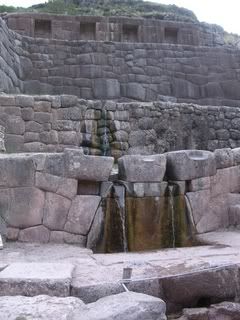
Ruins at Tambomachay
While Cusco was a major center in the Incan world there were other (and continue to be other) communities close by located in what is referred to as the Sacred Valley of the Incas. While Cusco is very beautiful and has lots to look at, it can get oppressive as it’s very touristy and people are constantly
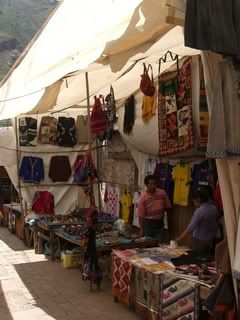
hounding you to buy things from them. For this reason and the fact that we wanted to get out into the countryside, Lindsay and I decided to take a day tour of the Sacred Valley on Sunday. The first stop was the Sunday market of Pisac (shown above) where we, unfortunately didn’t get enough time to make all of our purchases so will be returning to Pisac later in the trip. Above the village of Pisac are the ruins of an incredible old fortress (shown below with all of the terraces). And, as training for our upcoming 4 day trek to Macchu Picchu we climbed to the top for some great views of the Sacred Valley which I’ve shown here as well.
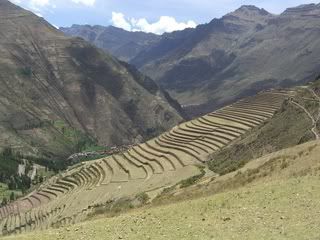
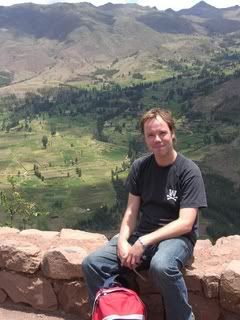
My friend Pascal who I met in Ecuador 3 weeks ago and who was on our Sacred Valley Tour
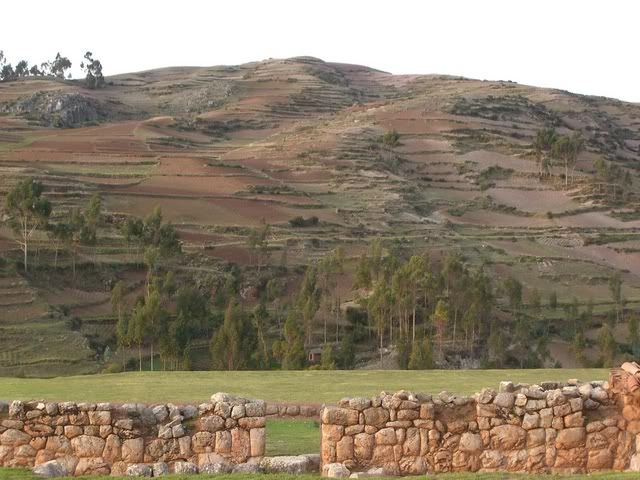
After lunch we were off to another important set of ruins in the adorable village of Ollantaytambo. I included a few other pictures below (notice the face in the center of this one? It was carved to perfectly splay the light around it at the beginning of the summer solstice. The building are old storehouses and the multiple notches are doorways for ventilation). Also, examples of the crop fields on the mountain faces…it is amazing how they can grow crops on nearly vertical mountain sides. And finally, one of my favorite type of shots…at dusk and near sunset…
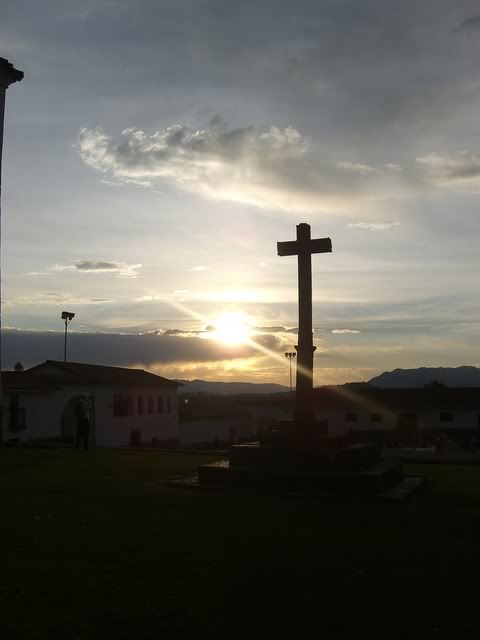
Tags: 9 - Peru, Cusco, Ollantaytambo, Saqsaywaman

December 12th, 2007 at 1:47 pm
Totally Cool
December 13th, 2007 at 1:37 am
Really have enjoyed your travels and Samantha too.